|
Modulus
· MTO
· Nikon
· SONY
MTO 1000
The eclipse was photographed by the object-lens MTO 1000 of the Russian
production that was
lent by the Rokycany Astronomical Observatory (West Bohemian town). We took photos using the film Kodak Royal Gold
200 ASA. As a camera we used Petri MF-1 with a wire
release shutter, lent by Karel Øezáè. The negatives were digitalized by the DTP
studio in Vodickova street (centre of Prague) with the snap size 4535×3035 pixels.
|
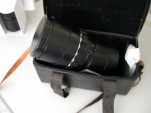
|
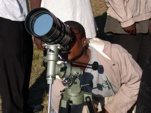
|
|
Object-lens MTO 1000 |
MTO 1000 on the
Lusaka University playground |
During the total phase, which lasted 3 minutes and 20 seconds,
we had taken 25 snaps. The exposure time varied from 1/1000 s to 1 s.
We took the snaps from the shortest time to the longest and afterwards back. In
the short times several protuberances can be seen while in longer exposure times
the structure of the outer corona is visible. The snaps were elaborated by Corel
Draw 9 and Adobe Photoshop 5 applications. Additionally we will develop special
software for automatic elaboration of the exposed snaps and we hope even in
better results.
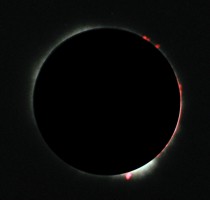 |
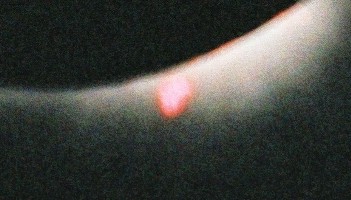 |
|
Inner corona with characteristic
protuberances.
|
Detail of the protuberance.
Exposure time 1/1000 s.
|
Composition of several snaps
Subsequent five-snap-sequence was used for additional radial
mask elaboration. The snaps were composed into one image from rings via radial
Gaussian blur filter. In the second step a mask was created as subtraction of
the radially blurred composition and original composition. This mask was
overlaied with the original composition. The process was time and memory
consuming and on PII 350 MHz/256 MB took nearly two hours.
|

|

|
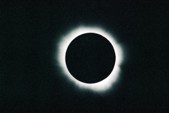
|
|
Exposure time1/1000 s
|
Exposure time1/500 s
|
Exposure time1/60 s
|
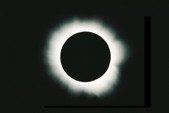
|
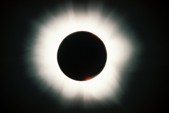
|
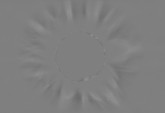
|
|
Exposure time1/8 s
|
Exposure time1 s
|
Created mask
|
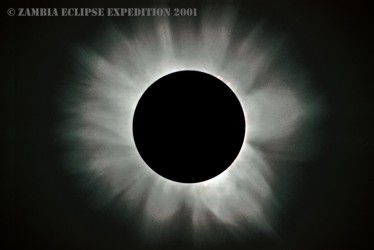
Final composition after an overlay with the mask
|

